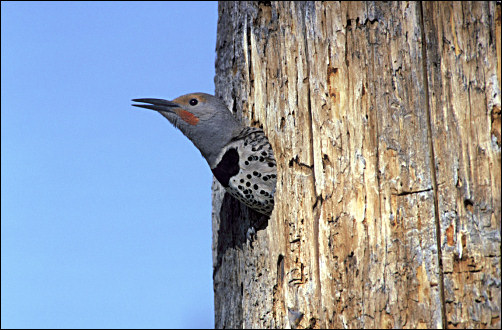
People interested in genealogy often trace back to an ancient split, where part of a family went one way and the other part another. And sometimes, the descendants of the two groups rediscover each other and once more consider themselves as one big, and even possibly happy, family.
Similar things happen in nature, and one of our Chihuahuan Desert
birds, the Red-shafted Flicker is a prime example. This large western woodpecker was
originally named as a separate species from the eastern Yellow-shafted Flicker.
Presumably the vast open grasslands of the Great Plains kept them apart. With the
spread of agriculture into the Great Plains, farms and villages sprang up. The farmers
characteristically planted trees as windbreaks to alleviate the ever present prairie
wind, and of course the settlements had to have their shaded main streets and front
yards. The Yellow-shafted Flicker followed the trees westward, and along the Rocky
Mountain front, encountered the Red-shafted Flicker. Birds of the two groups bred
readily, proving themselves as being of the same kind and thus avoiding the epithet of
being flighty fickle flickers.

Listen to the audio.
Contributor: Arthur H. Harris, Laboratory for Environmental Biology, Centennial Museum, University of Texas at El Paso.
Desert Diary is a production of KTEP, National Public Radio at the University of Texas at El Paso.

A flicker (Colaptes auratus) at the entrance to its nesting hole. Photograph by Dave Menke, courtesy of the U.S. Fish and Wildlife Service.